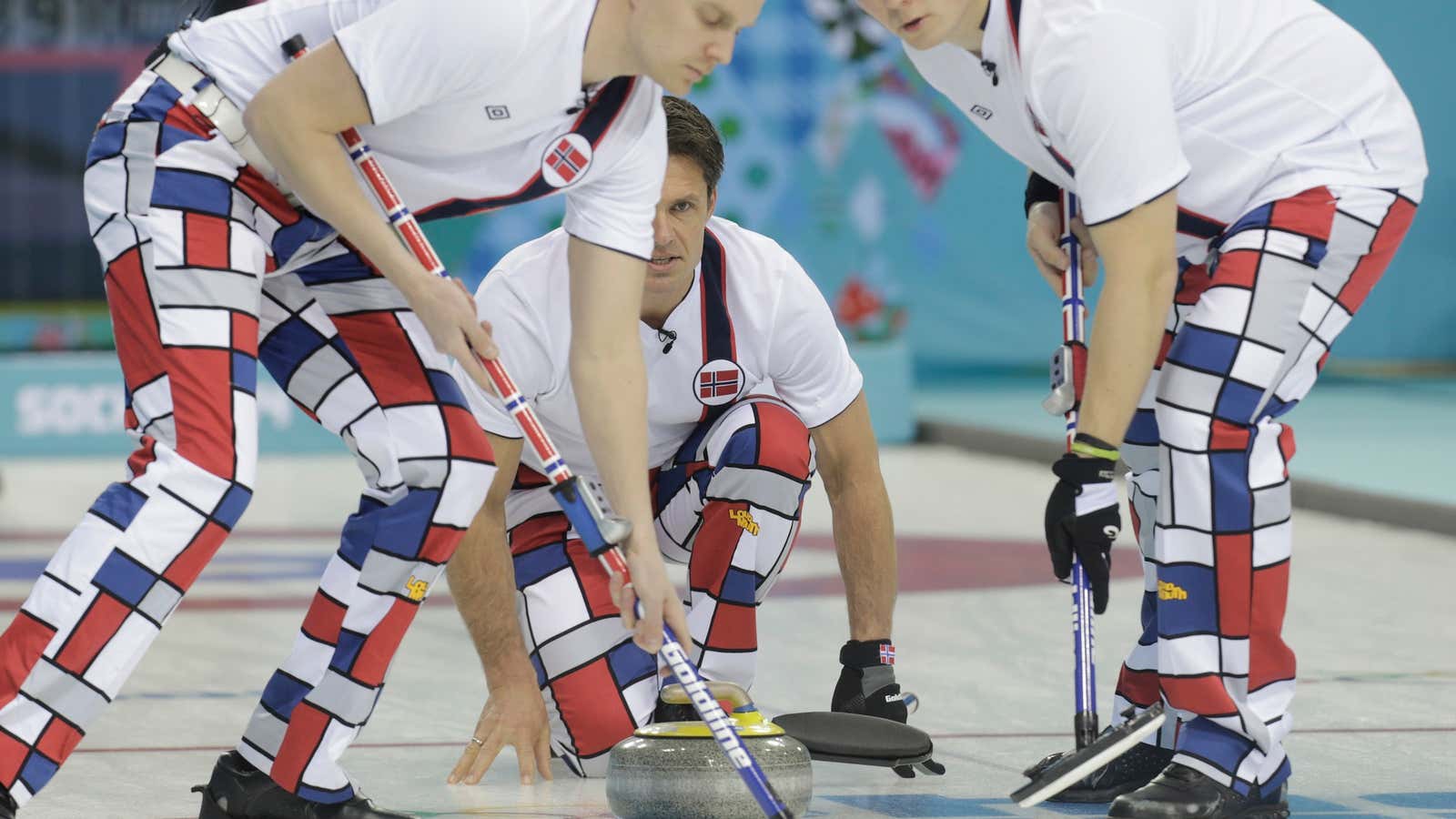The perfect ice for curling—arguably the quirkiest Olympic sport—is actually quite warm. According to mechanical engineer and amateur curler Rick Olson, the physics of curling ice is much cooler than the rink’s temperature.
In curling, Olson tells Chemical & Engineering News, the ice is “perilously close to being in the regime of water.” The sweet spot, he says, is -4.5ºC, or just a hair under 24ºF—any warmer, and there’s too much friction dragging on the curling stone. But if the ice is any colder, it won’t “curl,” or travel in the curved trajectory needed for the game.
Ice temperature varies by sport: Harder, colder ice allows for greater speed, so luge and bobsled tracks are frozen at around 23ºF. Speed skating ice can get as chilly as 16ºF to reduce friction. The only event with ice as warm and soft as that used for curling is figure skating. The ice needs to be soft enough for skaters to dig their skates in to leverage jumps, so it can be as warm as nearly 27ºF degrees. Each event has its own unique, complicated method of ice creation, and curling is no exception.
Making the ice for curling—or any ice sport, especially at the Olympic level—is more complicated than just maintaining a particular temperature (pdf). In Vancouver 2010, Olympic ice makers spent 10 days preparing the curling ice. First, a saline solution was pumped into pipes surrounding the concrete slab where the ice would sit, cooling it. Then, ice makers sprayed thin layers of purified water onto it. After several layers were frozen, they laid down a layer of paint, and after another dozen or so layers of ice came the logos and game markings. Finally, the ice was “pebbled,” or sprayed with water from a special hose head to create a controlled bumpy texture. Throughout the games, the sheets of ice were periodically scraped down and re-pebbled.
It seems that ice is properly pebbled—even if no one off the ice at Sochi seems to understand how curling works.




